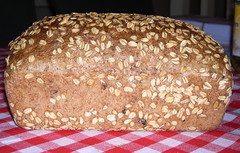
Asics Gel-Nimbus 9
Runner's World Crowned it the
World's Best Shoe 2007
I've become well acquainted with my feet after spending years running on them. I've come to know what they need in order to give me the most comfort and best performance. Let me help introduce you to your feet.
When buying a new pair of running shoes, here's some guidelines I've found that should help:
Step 1 - Find a good running shoe store. You can buy your shoe at the local mega-mart, but the sales professionals in a specialty store are better trained to help you pick the right shoe. To locate a store, ask friends who run, check running magazine reviews, or check the yellow pages.
(I've used both Al's Sporting Goods and Sport's Authority and have been happy).
Step 2 - Examine the soles of your old running shoes. Notice the spots where the shoes show wear from the road. This tells you where your foot falls every time it hits the ground.
Step 3 - Place your shoes side-by-side on a flat surface. If the shoes tilt in toward the middle(pronation), your new shoe probably needs more stability than your old shoe. If they tilt to the outside (underpronation or supination), you may have a high arch and your new shoes should have good shock absorption (cushion).
Step 4 - Look at the top of your shoe. If you can see an outline of your big or little toe, and you've noticed discomfort in those areas while running, you should try a larger or wider shoe.
Step 5 - Consider the amount of running you will be doing. This tells you whether you should buy an elite running shoe or a basic model. The more intense the running, the more money you'll want to spend on the shoes.
Step 6 - Go to the running shoe store. Tell them what you've found out about your old shoes, or bring a pair with you. The employees should be able to "read" your old shoes and guide your choice. If not, you probably should find a different store.
Step 7 - Try out the shoes. Take a jog around the store. Try on as many shoes as it takes. Make sure you like the feel and fit of the shoe.
Step 8 - Buy the best running shoes for your feet. When you find the right pair, don't let them get away. Take them home and start breaking them in! (Wear them around the house for a few days before you go running to avoid blisters)
Personally I need a shoe with a wide width and cushion since I tend to underpronate. Also, I've come to like a shoe with some mesh lining that allows for my feet to breath. The best thing you can do is take an old shoe with you to the shoe store and most of the time they can analyze it and tell you what would work best for you.
 I thought it would be fun to list some of my favorite tunes to listen to when I run/workout in hopes that I would get some lists back from you. I making 2 parts out of this so we can include a list of cool-down songs in the next post.
I thought it would be fun to list some of my favorite tunes to listen to when I run/workout in hopes that I would get some lists back from you. I making 2 parts out of this so we can include a list of cool-down songs in the next post.


















